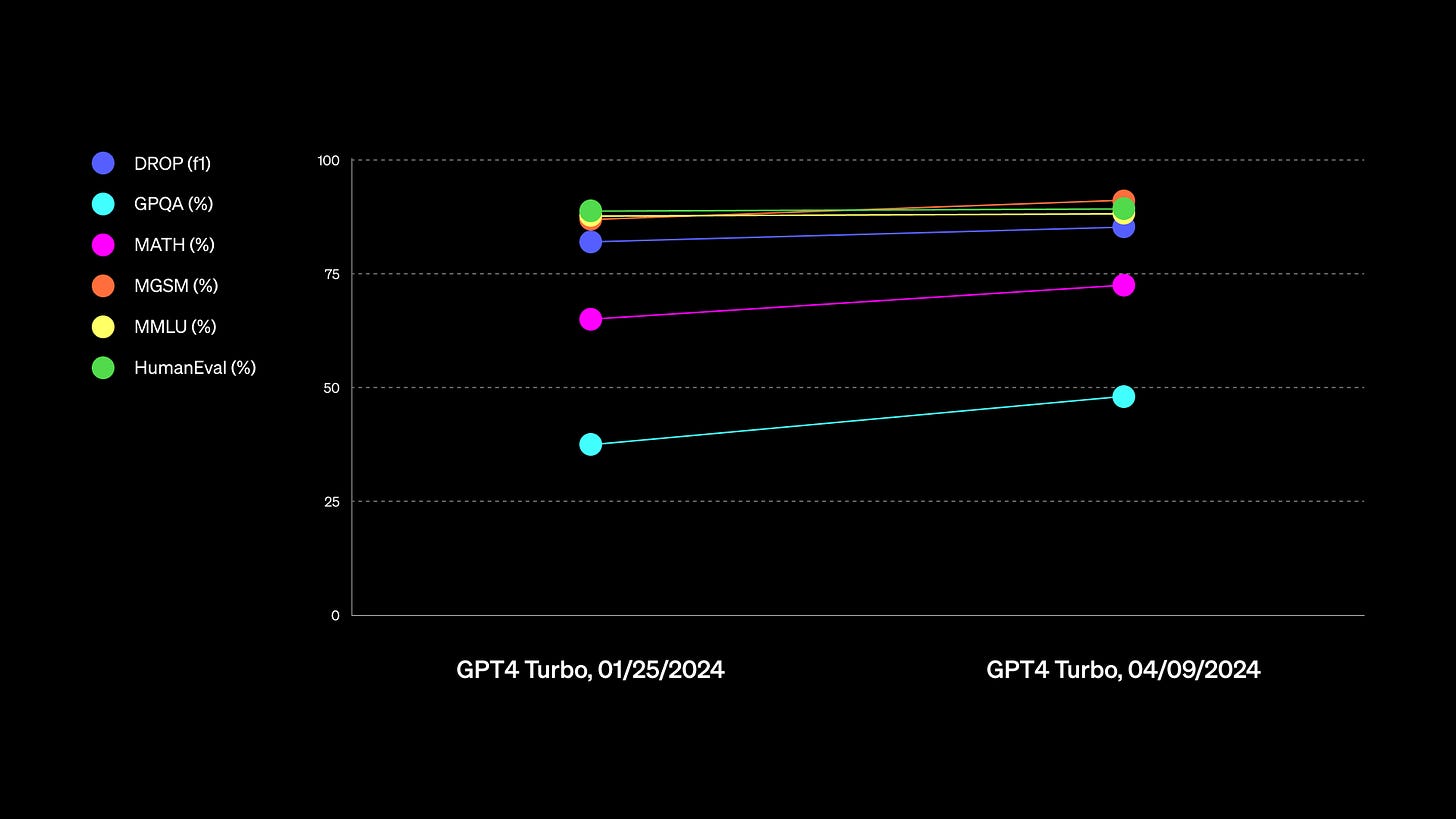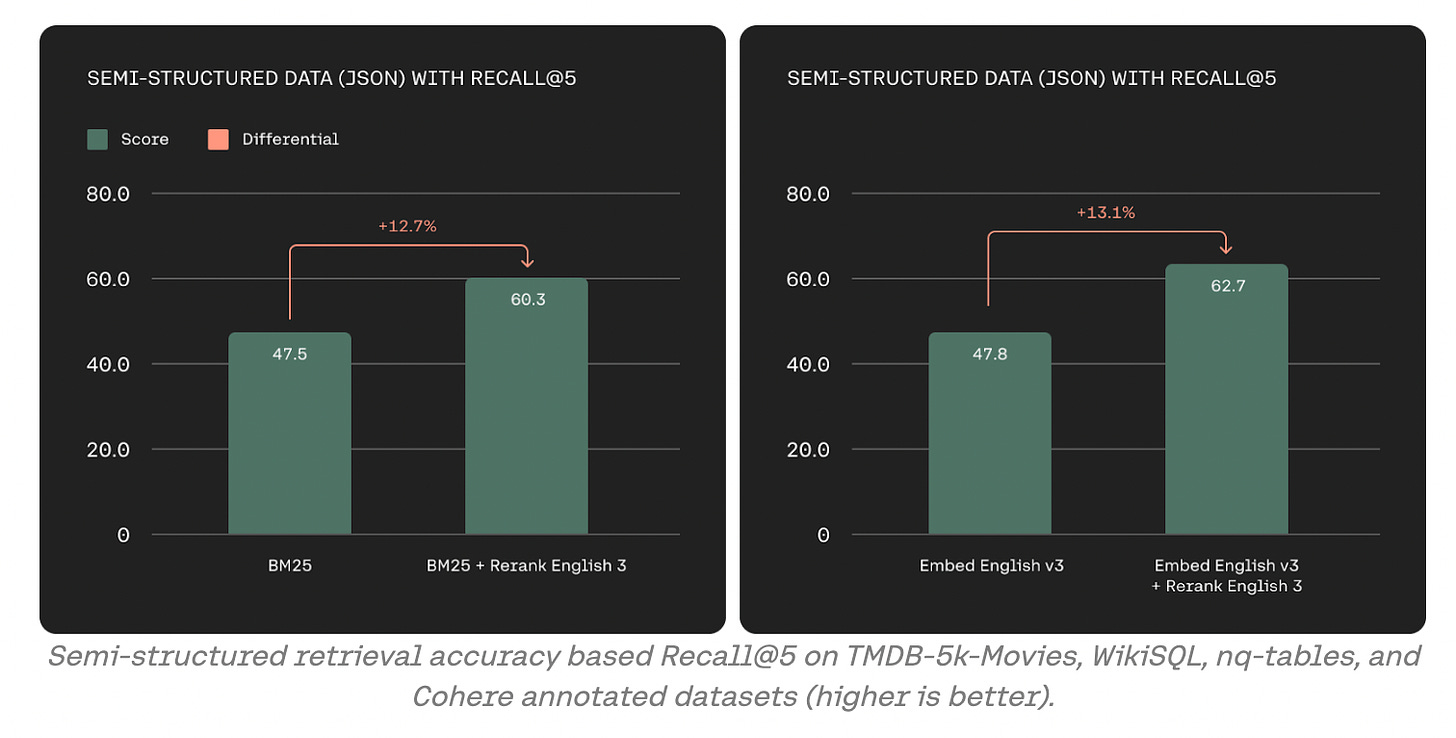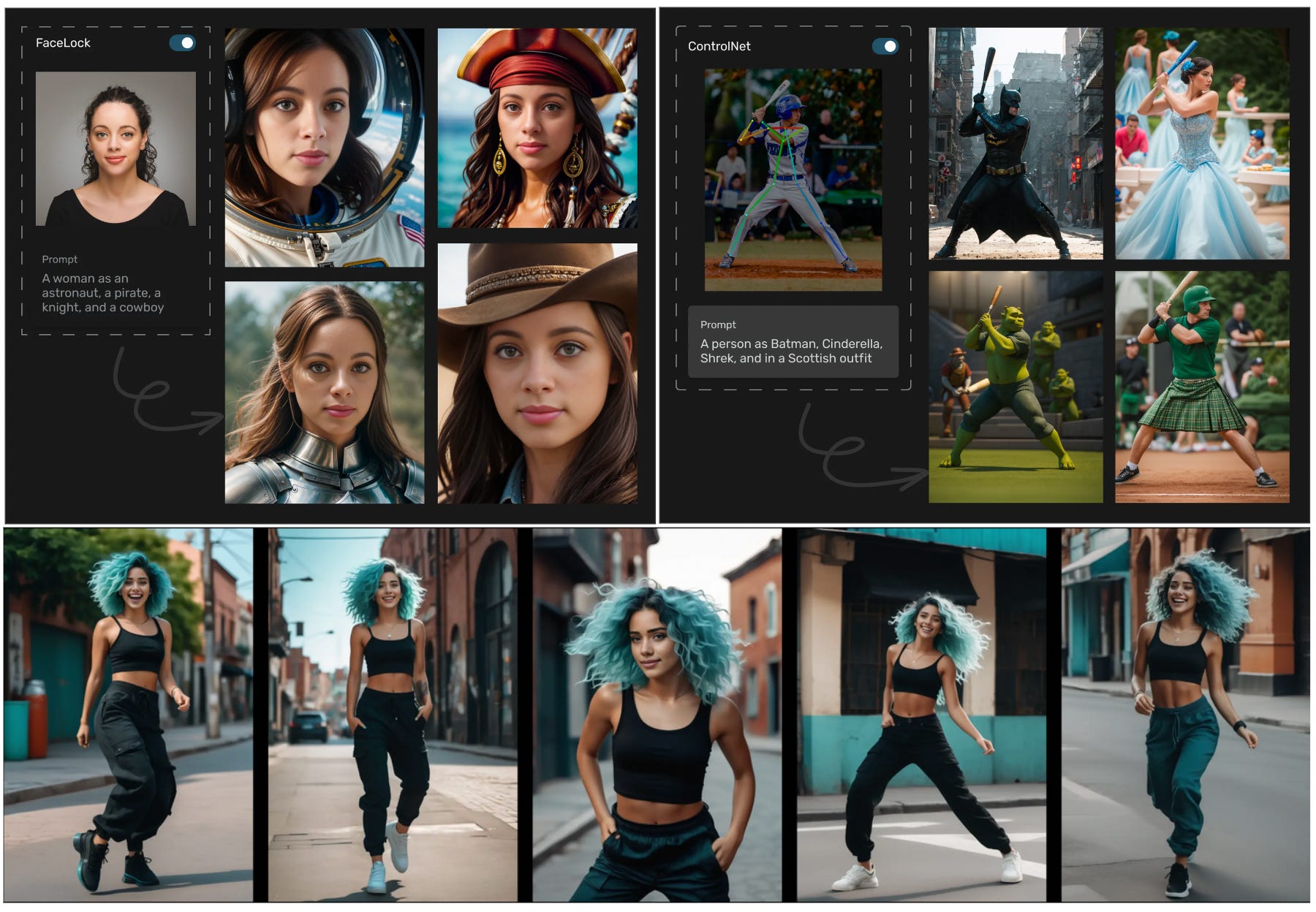
Today’s top AI Highlights:
-
ChatGPT now uses the new GPT-4 Turbo
-
Read this before you decide to purchase Humane’s AI Pin
-
Meta’s framework to test AI’s understanding of physical spaces
-
Cohere’s new foundation model for efficient enterprise search & retrieval
-
Get your resume analyzed by AI for a specific job and increase your job application success
& so much more!
Read time: 3 mins
OpenAI updated the ChatGPT model with GPT-4 Turbo for its paid users. This enhancement will improve capabilities across various domains, including writing, math, logical reasoning, and coding.
Key Highlights:
-
Enhanced Writing Styles: GPT-4 Turbo offers more direct and conversational responses, reducing verbosity while maintaining clarity.
-
Improved Functionalities: Enhancements in mathematical calculations, logical reasoning, and coding abilities position GPT-4 Turbo as a versatile tool for diverse professional needs.
-
Accessible via API: The new model is accessible through ChatGPT Plus, Team, Enterprise, and API, expanding its availability to a broader user base.
Humane has finally started shipping the AI Pin, its highly anticipated wearable called as a “second brain,” which aims to make screen interference in your daily life as less as possible. Priced at $699 with a required $24 monthly subscription, the AI Pin has generated considerable buzz and skepticism in equal measure. While the objective of the Pin is novel, to integrate AI into daily life and minimize reliance on smartphones, initial feedback from users points to a blend of innovative ideas and significant execution gaps.
Strengths of the Humane AI Pin:
-
Design and Build Quality: Probably the most appreciated is the Pin’s sturdy build and high-quality design. Its compact, wearable format is praised for being intuitive and aesthetically appealing.
-
Real-Time Translation: The device excels in real-time translation.
-
Hands-Free Operations: It’s very convenient for hands-free phone calls and other simple voice commands like sending a text message, looking for a location for which you gave not very clear description, or playing music, without sticking out the phone from your pocket.
Weaknesses of the AI Pin:
-
Insufficient Features at Launch: The device launched with a limited set of features, missing several essentials such as email integration, robust app connectivity, and practical tools like navigation assistance, which is critical to avoid screen.
-
Operational Challenges: There are significant delays in response times and performance is sluggish sometimes, particularly in executing tasks such as music playback or weather updates, which detracts from the efficiency and convenience.
-
Projector Issues: The built-in projector for displaying information, struggles with visibility in daylight and is cumbersome in interacting.
-
Thermal Issues: Frequent overheating leads to mandatory shutdowns for cooling, impacting the device’s continuous usability.
-
Accuracy Issues: There were notable instances where the Pin gave incorrect information or failed to perform as expected, for instance, identifying a location or giving advice about a food item.
[Sources: Inverse, The Verge, The Washington Post, Wired]
This is perhaps a common trend with first-gen devices: they often showcase great potential but come with notable imperfections that could be improved in future iterations.
Our Opinion: While there is a lot of scope for improvements, buying the first-gen AI Pin at its current price point wouldn’t be worth. You wouldn’t want to be the beta tester of the device!
Embodied AI agents like robots are designed to interact with and navigate through our physical world, a complex task that requires integrating sensory data with spatial awareness. However, they often struggle to understand simple spatial queries, such as locating an object within a room, which would be effortless for humans. This is because current AI models, even vision language models, rely heavily on language data and fail to integrate and interpret visual inputs.
Addressing this, Meta has developed the OpenEQA framework to rigorously evaluate AI agents’ ability to understand and interact with their environments by mimicking the types of questions a human might ask.
Key Highlights:
-
Dataset: The benchmark includes over 1,600 Q&A pairs and over 180 videos and scans of real places. These are used to make the tests as realistic as possible.
-
Tasks: It involves two tasks for testing AI agents: episodic memory EQA – asks agents to remember past events to answer questions, and active EQA – requires agents to move around and gather information to respond.
-
Tests: Testing shows that even the best AI models can’t match human ability to understand spaces. They struggle especially with spatial questions, performing no better than if they were only using text.
-
The Gap: Enhancing LLMs with the ability to “see” the world and situate them in a user’s smart glasses or on a home robot, can open up new applications and add value to people’s lives.
Searching for relevant information in a sea of enterprise data is challenging, especially when documents are not just plain text. Cohere’s latest model, Rerank 3tackles this issue head-on, offering a more efficient way to enhance enterprise search and RAG systems. This model can be easily integrated into existing databases, search indexes, or any legacy application with native search capabilities, and improve performance and reduce operational costs with minimal impact on latency.
Key Highlights:
-
Extended Context Length: Can handle long documents with a 4k context length, allowing for a better understanding of document content, and higher search quality even for longer texts.
-
Data Compatibility: Can search through diverse data types, including emails, invoices, JSON documents, code, and tables, improving accessibility and utility of semi-structured data formats.
-
Multilingual Support: Supports over 100 languages, catering to global organizations dealing with multilingual data.
-
Performance Enhancements: Rerank 3 reduces latency by up to 3x for longer documents compared to its predecessor, and also significantly cuts down the total cost of ownership (TCO) for RAG applications.
-
Cost Efficiency: Enables users to pass fewer, more relevant documents to the LLM for grounded generation, making the running of RAG applications up to 98% less expensive compared to peers.
-
Code Retrieval: Demonstrates marked improvements in code retrieval, helping engineering teams to search through the enterprise’s proprietary code repositories or vast corpus of documentation.
😍 Enjoying so far, share it with your friends!
-
Chapter One: An AI-powered application to help optimize your resume for different job applications by analyzing its format, content, and keywords to ensure compatibility with Applicant Tracking Systems. It provides detailed feedback on how well your resume aligns with specific job requirements, offering suggestions for improvements and an overall rating.
-
Chat2db: AI-driven data management platform. Integrate conversational AI with databases to automate tasks like querying, updating, and managing data through simple text prompts. It features capabilities like real-time data interaction, support for multiple database types, and a user-friendly interface.
-
RenderNet: Create realistic images with character consistency across multiple frames. It features advanced controls for transferring image style, inpainting, and prompting several text-to-image AI models at once, making it suitable for projects requiring uniform visual themes like AI influencers.
-
Inari: Automate customer interaction analysis with AI from data sources like Slack, Salesforce, and Gong. It highlights key quotes, scores sentiment, triages feedback to respective teams, provides accurate insights in a visual dashboard, and recommends solutions for top customer problems.
-
The biggest reason AI won’t replace your job is that you are going to be cheaper than AI
Drivers are cheaper than driverless cars today 🤷♀️This will be more often than not true when it comes to physical work and blue collar professions! ~
Bindu Reddy -
The barriers to writing code keep going down. Complete applications are within reach, more than ever it is not about the code but about the problems being solved and how the solution is distributed… ~
anton
That’s all for today! See you tomorrow with more such AI-filled content.
⚡️ Follow me on Twitter @Saboo_Shubham for lightning-fast AI updates and never miss what’s trending!
PS: I curate this AI newsletter every day for FREE, your support is what keeps me going. If you find value in what you read, share it with your friends by clicking the share button below!





































































































































































































































































































































































































































































